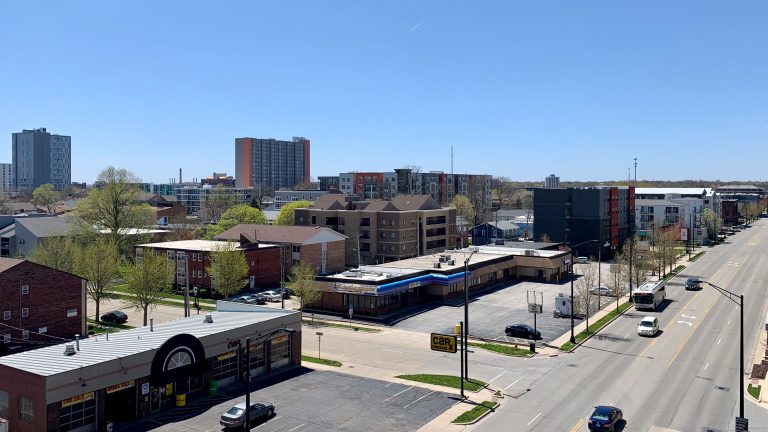Both Champaign and Macon counties received a less-than-perfect grade for air pollution in a new report from the American Lung Association. The group released its 2020 State of the Air report Tuesday, which ranks cities and counties based on their levels of air pollution.
The report found that between 2016 and 2018, more U.S. cities saw days with high ozone and short-term particle pollution levels. Champaign and Decatur ranked relatively poorly compared to other cities in Illinois when it comes to ozone and long-term particle pollution.
The new rankings follow several reports that higher exposure to air pollution is linked to an increased risk of complications from COVID-19. A recent study out of Harvard University found that increases in long-term exposure to PM2.5 is linked to a higher death rate from COVID-19.
“It is logical to assume that people who live in an environmental justice area or already have impacts to their respiratory system, will have a problem with COVID-19,” said Angela Tin, National Senior Director of Clean Air Initiatives at the American Lung Association.
The report relied on data from state Environmental Protection Agency (EPA) monitoring sites, which measure different types of air pollution, including ozone and particulate matter. Particulate matter, or PM2.5, is divided into two groups: short-term and long-term, or annual. Short-term particulate matter is measured within a 24-hour period, and long-term levels are defined by their cumulative effect over the course of a year.
Champaign and Macon both ranked well for short-term particle pollution, receiving “A” grades.
But it’s the chronic daily exposure of long-term particle pollution that has a bigger health impact, according to the American Lung Association. Champaign ranked 135 out of 203 for long-term particle pollution, and Decatur ranked 157 out of 203.
Both Champaign and Macon counties received “C” grades for ozone pollution. Cook, DuPage and Kane Counties received F’s.
The biggest sources of ozone and particulate matter pollution is from mobile sources like cars.
“Any city you look at, whether it’s a very urban city like Chicago or a rural city, 60 to 70 percent of air pollution is from mobile sources,” Tin said.
Higher levels of ozone and particulate matter pollution can have a negative effect on lung health.
“[Ozone] affects everybody,” Tin said. “It affects healthy people that are out jogging, it affects elderly that have decreased lung capacity, it affects people who have impaired lung function like asthmatics or respiratory disease. The ozone gets deep into the lungs because it’s a very small chemical, and it’s like having sunburn in your lungs.”
That may make people who have confirmed cases of COVID-19 more vulnerable to developing respiratory complications.
Tin says that while the U.S. is currently seeing a drop in all types of air pollution due to the COVID-19 shutdown, the decrease is temporary and may not be enough to cancel out the cumulative effects of pollution up to this point.
“The benefits of a short-term effect do not really counter the harm that pollution has done to your body throughout your life,” she said.

